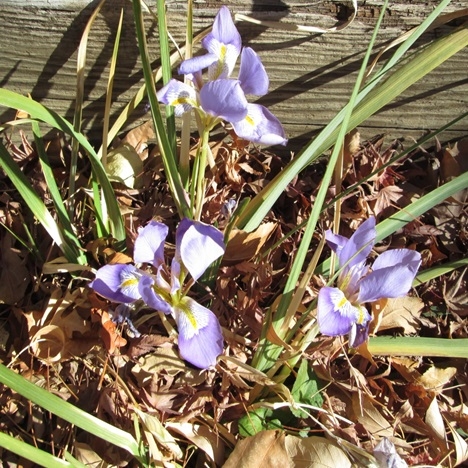by Alison Collin
If ever there was a plant designed to live in the high desert areas of the Owens Valley, it must surely be Iris unguicularis, a small rhizomatous iris native to hot, stony areas of Turkey, Tunisia and Greece. They will grow in sandy, stony alkaline soils with a pH of above 7.5, like hot summers, have low irrigation requirements, and flower in the winter. What more could we want?!
They are hardy to about -10°F although they pause in the blooming cycle when the temperature reaches 15°F. In the winter of 2014-2015, the flowers on one of my plants were frosted when the temperature dropped to 11°F, but it was soon in flower again.
The plants are rather slow to become established, but eventually produce low clumps, up to 18 inches across, of narrow, arching, evergreen leaves about 18” length. The violet/blue flowers which have a yellow stripe on the falls are produced in waves from late autumn to early spring and just clear the foliage, at about 1 foot in height. They are fragrant, and can be cut in bud and will open in water where their perfume may be enjoyed at close range.

The foliage can become a little untidy at times, and some people recommend cutting the foliage short in the fall so that the flowers will show up better, but in any case any brown or dying leaves should be removed. Although not prone to disease the one downside is that slugs and snails love the flowers so if you have a problem with these you will need to address it.
When so many of our plants in the Owens Valley are very dormant during the depths of winter, it is refreshing to see a rare splash of color on these brave little plants.